NORTH WALES COAST RAILWAY:NOTICE
BOARD
Rheilffordd arfordir gogledd Cymru: Hysbysfwrdd
24 March 2014
 Last issue
Last issue Archive
Archive Share this issue
Tweet
Tweets by @NWrail1
Contributions and comments are encouraged: see the Contributions Page
This site is dedicated to all our regular contributors and supporters, and especially the rail staff of North Wales.
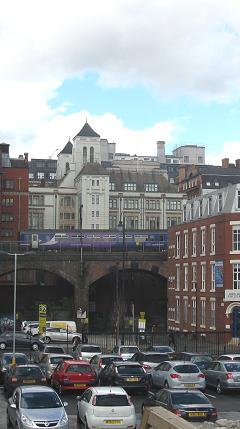
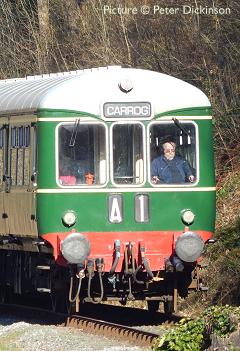
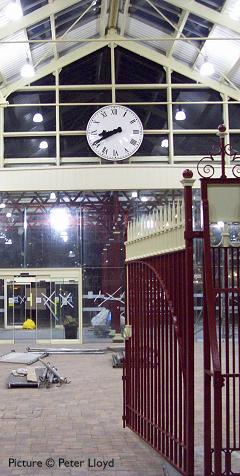
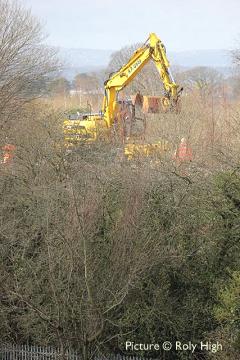
This list may be out of date if you are reading an archived page. For the current list visit our Calendar.
March 2014
Wednesday 26 March. Ffestiniog Railway Society. Group AGM followed by Adrian Gray. "Ffestiniog Heritage".
Thursday 27 March Merseyside Railway History Group AGM & Members Slides
Friday 28 March Great Western Society: John Hobbs 'Circular tour of North Wales 1966 to 1980'
April 2014
Tuesday 1 April North Wales Railway Circle Dave Rapson of Connah`s Quay presents a pictorial record of The Bidston - Wrexham Line.
Friday 4 April Clwyd Railway Circle Ron Watson-Jones 'The Irish Mail Train Crash at Penmaenmawr Aug 1950' Ron’s account of the accident on 27th August 1950.
Tuesday 8 April 8E Railway Association Chris Banks – Engine Sheds Pt. 3 Consett to Eastbourne.
Thursday 10 April Llandudno and Conwy Valley Railway Society 'Welsh Wanderings in the 1980’s & 90’s' Geoff Morris
Thursday 10 April Merseyside Railway History Group Ted Lloyd 'Quiz and informal evening'
Friday 11 April Altrincham Electric Preservation Society Slides from the Manchester locomotive society collection by David Young. Mainly steam locomotives taken 1950s and 1960s
Monday 14 April Wrexham Railway Society. Jon Penn. Railway Pictures From the 1960’s – scanned black and white negatives and vintage colour slides, favouring the Cheshire and surrounding areas.
Thursday 17 April Locomotive Club of Great Britain Norman Matthews "Steam in Central America"
Friday 25 April Great Western Society Tony Icke 'Around the regions in the sixties'
Saturday 26 April Excursion Chester Model Railway Club / FR Dee and Mersey: 'Somerset Coast Express' Hooton, Bache, Wrexham, Gobowen and Shrewsbury to Bristol, Weston-super-Mare, Taunton and Minehead.
Monday 28 April RCTS Merseyside, Chester & North Wales ‘South of the Border steam in the 50s and 60s’ by David Kelso, David travels from Kent to present a follow up to his earlier North of the border presentation, including a period when he was resident in the West Riding of Yorkshire.
May 2014
Friday 2 May (change of date) Mid-Cheshire Rail Users' Association Excursion from Hooton, Chester and stations on the mid-Cheshire line to Dumfries, Kilmarnock and Ayr.
Tuesday 6 May North Wales Railway Circle A.G.M. followed by Members Videos, Prints, Slides, and Digital work in the Photo Competition.
Thursday 8 May Llandudno and Conwy Valley Railway Society 'The Deganwy Dock Story' Eric Smith
Saturday 10 May Wirral O Gauge group open afternoon: 'We would like to invite model railway people to come along and bring a loco or just watch. We are also looking for new members to join us.' Unit 7, The Odyssey Centre, Corporation Road, Birkenhead, CH41 1HB on 10th May 2014 from 13.00 to 17.00. Admission £2. 2 rail F/s DC & DCC continuous tracks. More details can be obtained from Jenny Elliott on 0151 6530637 or j.elliott37[at]sky.com
Tuesday 13 May 8E Railway Association Les Nixon - Railways of Scotland.
Thursday 15 May Locomotive Club of Great Britain AGM and Members/Visitors Slides & Digital Photos.
Saturday 24 May Steam on the Coast Vintage Trains Seaside Flyer hauled by steam loco 5043 Earl of Mount Edgcumbe from Tyseley, Wolverhampton, Stafford and Crewe to Llandudno for the Llandudno Air Tattoo which is taking place that day.
June 2014
July 2014
Sunday 27 July Steam on the Coast. Railway Touring Company. 'North Wales Coast Express' Liverpool, Broad Green, Warrington BQ, Frodsham and Chester to Llandudno, Bangor and Holyhead.
Tuesday 29 July Steam on the Coast. Railway Touring Company. Welsh Mountaineer. Preston, Warrington BQ, Frodsham and Chester to Blaenau Ffestiniog.
August 2014
Sunday 3 August Steam on the Coast. Railway Touring Company. North Wales Coast Express Crewe, Wilmslow, Stockport, Manchester Piccadilly, Altrincham and Chester to Llandudno, Bangor and Holyhead. Diesel-hauled Crewe - Manchester.
Sunday 10 August Steam on the Coast. Railway Touring Company. North Wales Coast Express Crewe, Wilmslow, Stockport, Manchester Piccadilly, Altrincham and Chester to Llandudno, Bangor and Holyhead. Diesel-hauled Crewe - Manchester.
Sunday 17 August Steam on the Coast. Railway Touring Company. 'North Wales Coast Express' Liverpool, Broad Green, Warrington BQ, Frodsham and Chester to Llandudno, Bangor and Holyhead.
Tuesday 19 August Steam on the Coast. Railway Touring Company. Welsh Mountaineer. Preston, Warrington BQ, Frodsham and Chester to Blaenau Ffestiniog.
September 2014
Tuesday 2 September Steam on the Coast. Railway Touring Company. Welsh Mountaineer. Preston, Warrington BQ, Frodsham and Chester to Blaenau Ffestiniog.
Sunday 7 September Steam on the Coast. Railway Touring Company. North Wales Coast Express Crewe, Wilmslow, Stockport, Manchester Piccadilly, Altrincham and Chester to Llandudno, Bangor and Holyhead. Diesel-hauled Crewe - Manchester.
Saturday 20 September Steam on the Coast. Steam Dreams: Cathedrals Express. London - Holyhead.
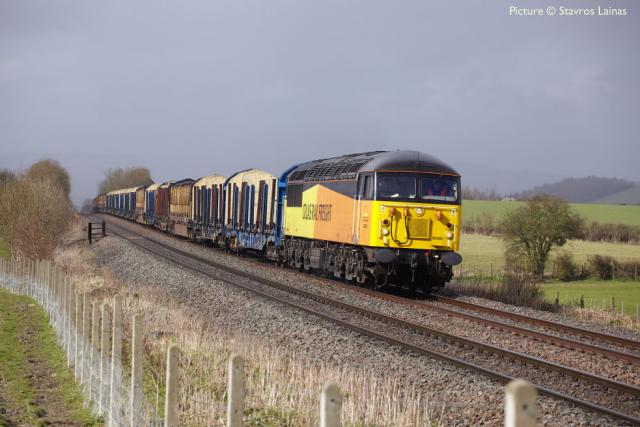
Shortly after a downpour, the empty log train from Chirk to Baglan with Colas 56 302 in charge passes Craven Arms on 21 March. Picture by Stavros Lainas.
North Wales Rail on Facebook
Jack Bowley writes: 'I thought I'd pop an email to you to see if I can get a Facebook group dedicated to Railways of North Wales mentioned on the next issue on your website? Believe it or not, the group is called 'Railways of North Wales' and we welcome anyone who's part of the social networking site to join and take part, sharing stories, photos etc to help build a Facebook community for the industry in the area.'
The link is - https://www.facebook.com/groups/TrainsInNorthWales/
FR / WHR circuit - report by Alan Crawshaw
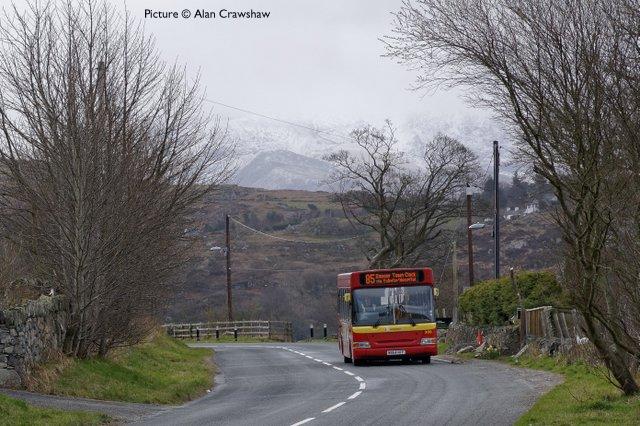
The first operating day of the remodelled Porthmadog station seemed a good time for a circular ride. We could have done it either way from home but starting from Caernarfon would have entailed leaving home at 08:00 and then a long wait in Caernarfon before the 10:00 Welsh Highland departure. We set off at 08:45 to catch Padarn bus 85 (above) to Bangor. Halfway to the bus stop I was regretting not wearing a warmer jumper, it was too late to pop back but this would definitely not be a day for open carriages.
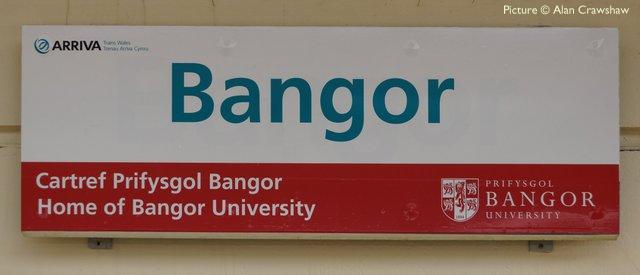
At Bangor station we noted the new signs featuring Bangor University, apparently Cardiff station has been similarly treated. The departure board confirmed that no trains were running past Rhyl with the 08:55 Rhyl to Holyhead in the picture.
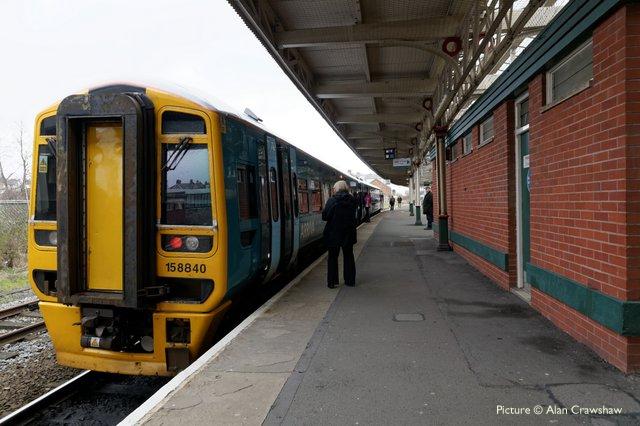
158 840 formed the 10:02 departure and delivered us to Llandudno Junction (above) for a lovely run along the Conwy Valley, the bare trees affording a more comprehensive view than a summer ride.
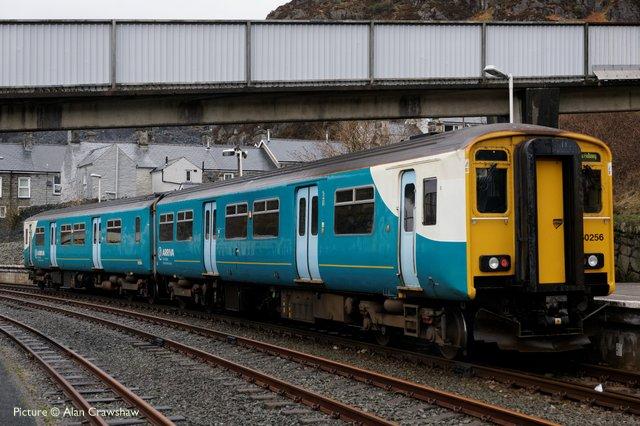
On our arrival aboard 150 256 at Blaenau Ffestiniog (above), Taliesin and Merddin Emrys were about to run round the stock prior to taking the 11:45 to Porthmadog. The train was well filled, departing about four minutes late and arriving about ten minutes late after some unexplained halts during the latter part of the journey.
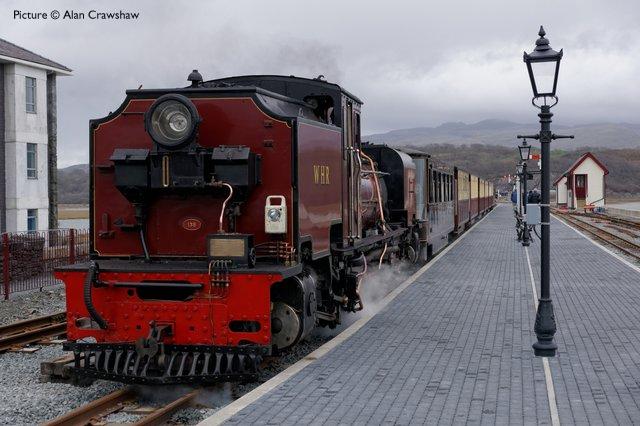
The remodelled Porthmadog station looks good, allowing two trains to occupy platforms simultaneously, Welsh Highland Garratt 138 (above) had arrived from Caernarfon and ran round the stock after our train had come to a halt.
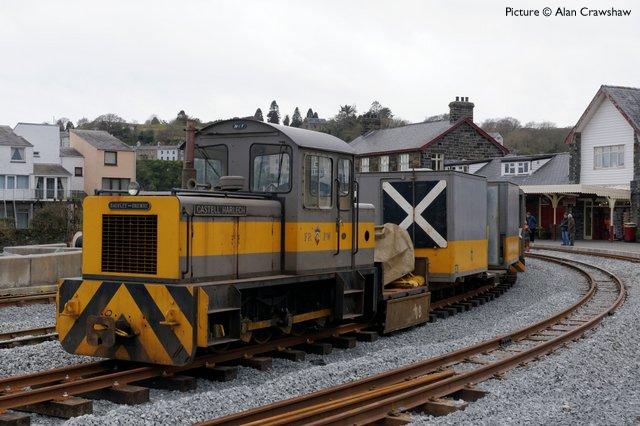
Work was continuing on the tracks in the station, the works train including diesel Castell Harlech looking good in the old BR engineers Dutch livery.
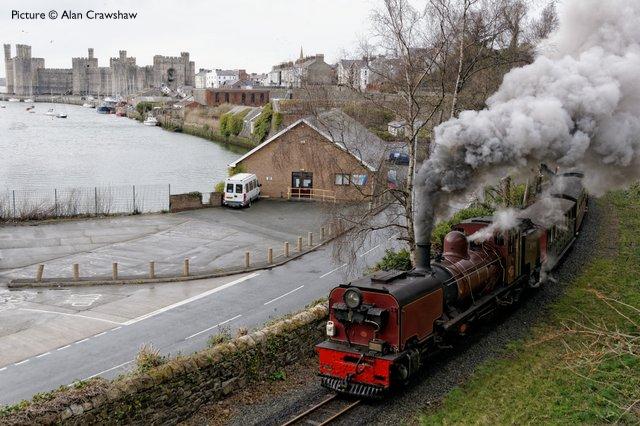
There was time for a lunch break in the busy Spooner's café bar at Porthmadog. then we boarded the 14:05 to take us on to Caernarfon, again the train was busy. I photographed the empty stock returning to Dinas depot with Caernarfon castle in the background; it's a pity that St Helens Road is such a scruffy thoroughfare with its derelict and nondescript buildings, an unattractive entrance into the town though passengers can see the castle when they arrive. We caught Padarn service 83 which took us within a 15 minute walk from home.
More Class 70s on the Way
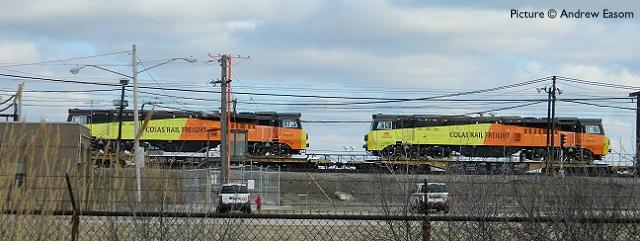
On Sunday 23 March, Andrew Easom, correspondent in Cleveland, Ohio, spotted the next two Class 70s for Colas Rail loaded on flatcars for the journey from the GE Transportations plant at Erie, Pennsylvania to the port of Norfolk, Virginia for shipment to the UK.
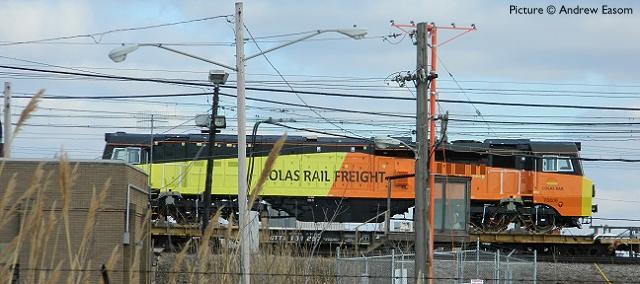
The location is near near Rockport yard, Cleveland. Above, a closer view of 70 806...
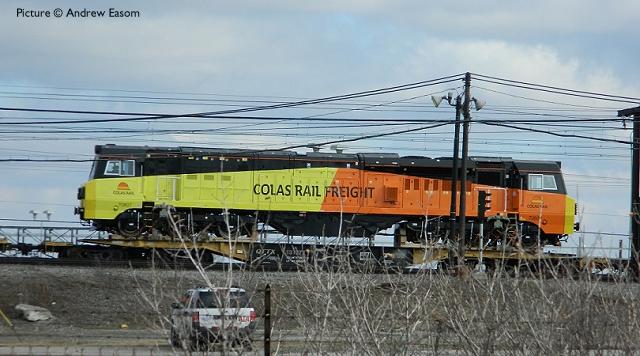
... and this is 70 807. Colas have been awarded a share of the next Network Rail contract to operate infrastructure trains. The fleet will comprise 70 801, a demonstrator loco built in Turkey and later modified to British standards, and nine Erie-built locos. As we understand it, Lloyds TSB Rail originally ordered 30 locos for use by Freightliner; the order was later reduced to 20, nine of the rest, 802-10, some of which may have already been under construction, have been diverted to Colas.
Manchester views - by Charlie Hulme
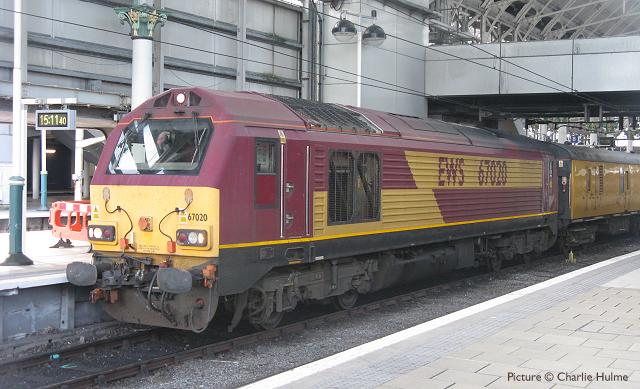
Recently, some of Derby to Derby high-speed track recording runs intended for the yellow 'New Measurement Train' have seen performances by an understudy in the shape of a rake of Network Rail vehicles top-and-tailed by Class 67 locomotives. Above, 67 020, now leading, is about to depart from Platform 8 at Manchester Piccadilly whence the train retraces its steps back through Stockport.
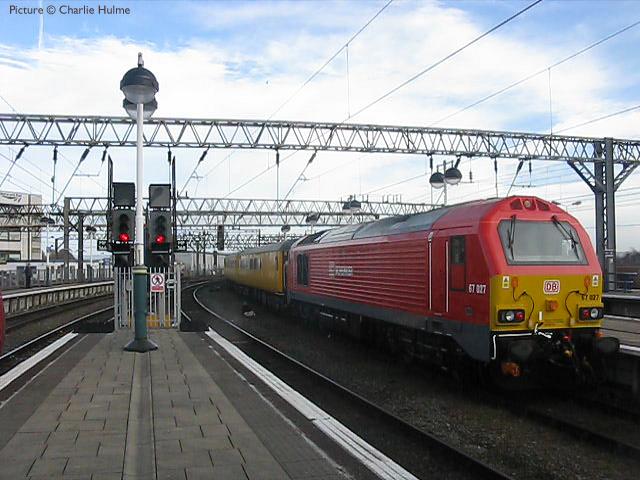
On the other end, recently-re-liveried 67 027, the first 67 to be treated to 'standard' DB Schenker livery, if doesn't count the special 'maple leaf' colour on 67 018. The name Rising Star has been lost in the process, but note the space between the class number 67 and the 027, normal in DB's fatherland Germany and once required in Britain until it was quietly dropped (by the privatised companies?), for the pathetic reason that there was no room for it on the computer database.
We have stubbornly retained it here, partly for cussedness, partly because we can write just 67 027 instead of 'Class 67 no. 67027' and partly because (for example) 60 022 has, to the best of our knowledge, never achieved 126 mph. Let's hope it catches on...
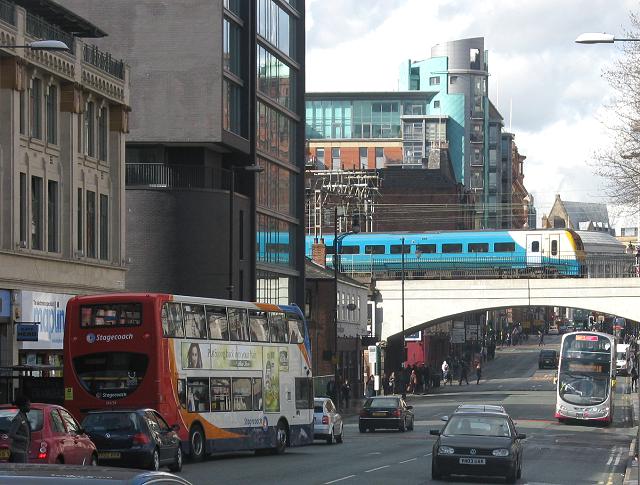
A busy scene in Manchester on 21 March, looking north along Oxford Road towards Oxford Street which begins at the former boundary between Manchester and Chorlton-upon-Medlock: the bridge over the River Medlock behind the modernist Holiday Inn Express hotel (which opened in 2010). An Arriva 175 crosses the bridge, working the 13:50 Manchester Piccadilly - Llandudno. Stagecoach buses predominate on this busy road, but FirstGroup are gaining a foothold, having recently purchased local operator Finglands. The First bus on the right is on route 18, which runs across the city centre to serve the Universities on Oxford Road and terminate in the heart of the Manchester Royal Infirmary site. A century ago, Manchester-based artist Adolphe Vallette painted the view from a nearby spot: the result 'Oxford Road, Manchester' is one of his most famous works.
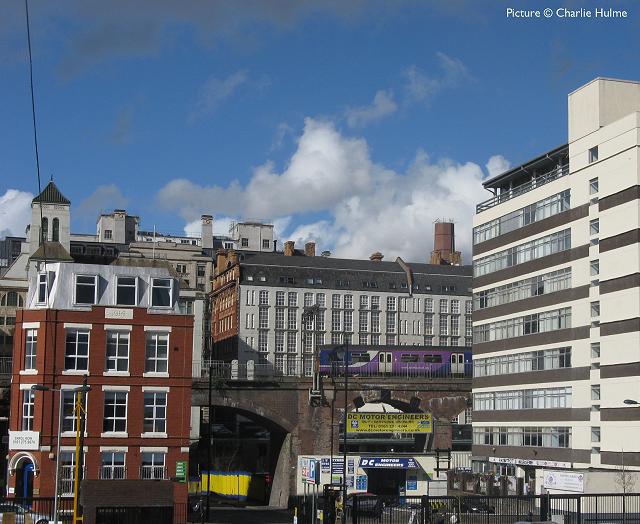
A short distance to the east of the above view, the recent total demolition of the large BBC complex, and its opening (without planning permission) as a car park has opened up a vista of the Viaduct carrying the railway between Piccadilly and Oxford Road. The section crossing the curious dead-end part of York Street has only a fence rather than a wall for a parapet, seen with a Northern Rail Class 150 passing. Valette was here too: 'York Street leading to Charles Street', also in Manchester Art Gallery, dates from 1913 while he was teaching at Manchester School of Art.
Wrexham - Saltney redoubling starts - report by George Jones
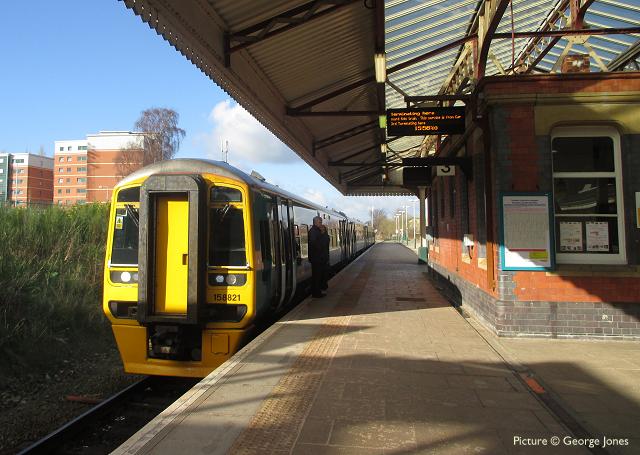
The weekend of 22/23 March, saw the lines between Wrexham and Chester and between Rhyl and Chester closed for permanent way work to begin on the redoubling project. I understand that work began at the junction at Saltney. New pointwork lay at trackside last week and the Wrexham booking office staff told us the work involved renewal of the junction. The beginnings of a works compound for the contractors is also evident on the old Saltney sidings area below the railway embankment. Meanwhile trains from the south were terminating in platform 3 at Wrexham General. I observed 158 821 / 822 (above) depart on the 16:01 for Birmingham International.
Rail replacement coaches were parked up at Wrexham on the Sunday, one labelled all stations to Rhyl. This sort of disruption (only on the Wrexham line after the first few weekends) looks set to continue for most of 2014 while the job progresses, including a 9-day blockade in July or August.
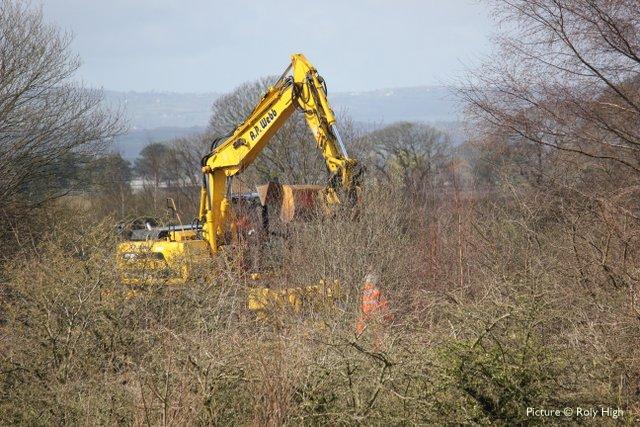
Roly High went to have a look at the work site, but found it largely obscured by trees and undergrowth from public view (above).
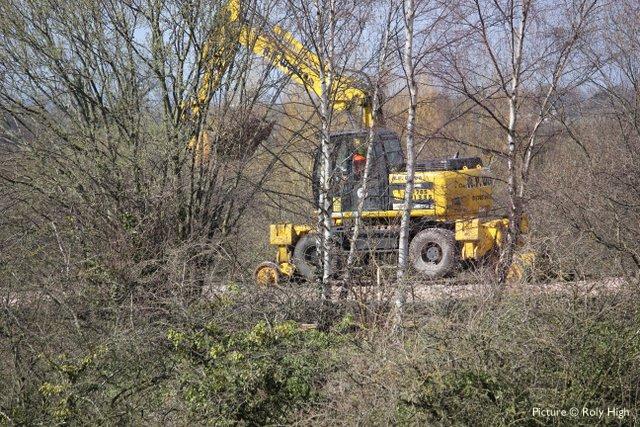
Road-rail equipped contractors' machines were in use (Roly High).
Barmouth to Harlech reopens on 1 May - Network Rail press release
Trains are set to run again between Barmouth and Harlech on 1 May as Network Rail completes the massive £10m programme of storm repairs two weeks ahead of schedule. Dozens of engineers have been working round the clock, seven days a week, to repair the sea defences and rebuild the railway line. One of the worst affected sites was at Llanaber, north of Barmouth, where the winter storms and tidal surges had severely damaged the infrastructure.
As part of the massive repair, 40 tonnes of debris have been removed and 6,000 pieces of 'rock armour' that form the sea protection have been replaced or repaired. In order to re-open the line, the team has also been replacing more than 1,000 sleepers, 2500 tonnes of ballast and 1400 metres of track.
The rail replacement bus service between Harlech and Pwllheli, due to the closure of the Briwet bridge, will continue for now. Network Rail 'look forward to the rest of the line reopening in the very near future.'
Beyond the repair work, a long-term strategy - the Coastal Asset Management Plan - is currently being developed to safeguard the 34 miles of railway sea defences Wales in Wales against the impact of extreme weather and changing climate. The long-term strategy builds on the existing annual £1.2m programme to maintain and renew the railway sea defences in Wales.
Cemmaes Road signalbox - reminiscence by Aled Rees
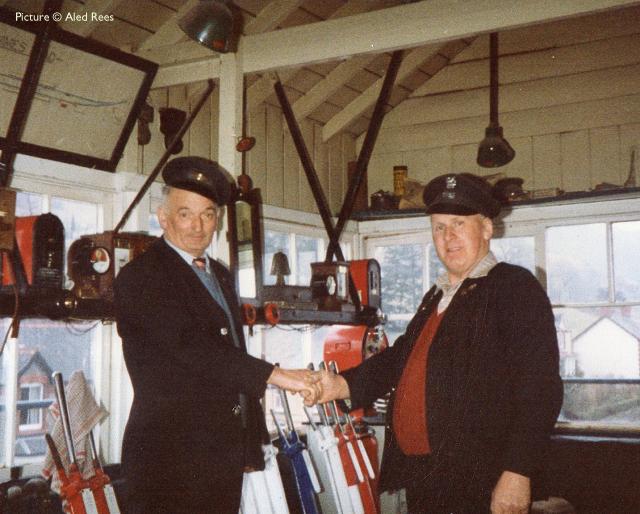
This month marks the 30th anniversary of the closure of Cemmaes Road signalbox and passing loop on the Cambrian main line between Shrewsbury and Machynlleth. I knew this box well and spent many hours as a child in the company of the two signalmen, Ronnie Thomas and Wil Breese.The lengths that they allowed me and a friend to work the box at the ages of 10 onwards beggar belief these days. This was in the seventies when railway traditions were still very strong and before the age of stringent health and safety rules. Indeed what I learnt with these two I now put to good use as a signalman on the Llangollen Railway. The photo above shows the two signalmen on the closing day - 10 March 1984.
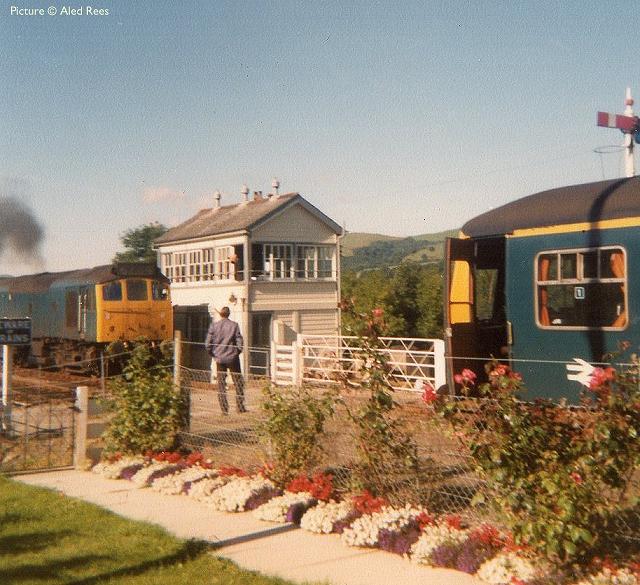
September 1979 and a 'down' DMU (probably from Birmingham New Street) crossing the 10:10 Aberystwyth to Euston hauled by a pair of Class 25 diesels.
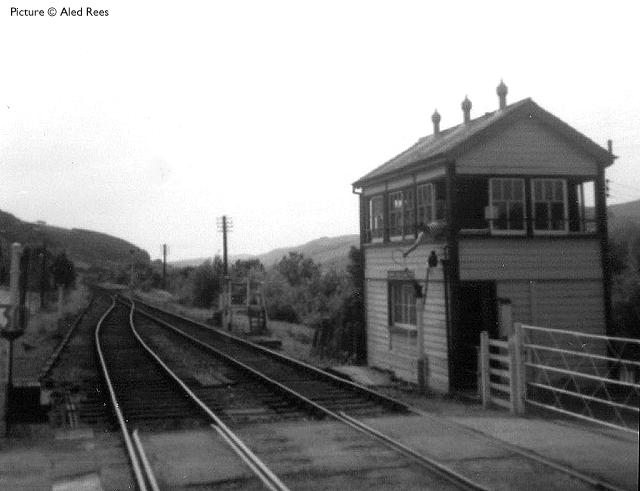
A general view taken in August 1978: the signalman is fitting the single-line token, in its hooped bag, into the holder from which the driver of an approaching train can collect it.
Salford continued
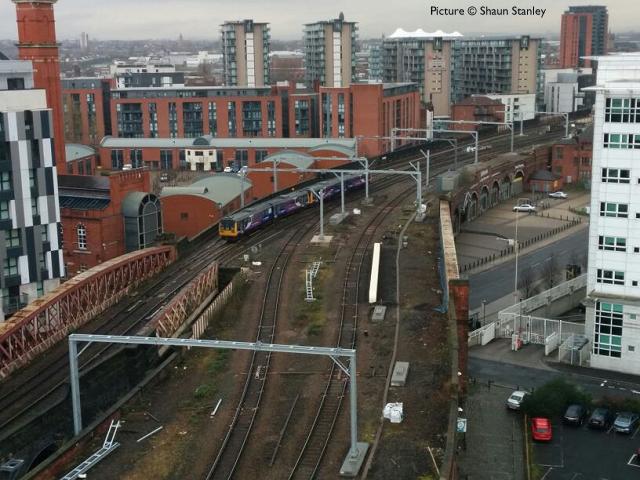
The first version of our caption (written by Charlie) to Shaun Stanley's picture last issue contained some errors, shame-facedly corrected after comments from late-night readers. To confirm, Shaun's view is towards Manchester Victoria station, with the line from Bolton on the left. This is the scene after the weekend engineering work pictures last time, with a pair of Class 142s heading towards Victoria. More gantries await their wires.
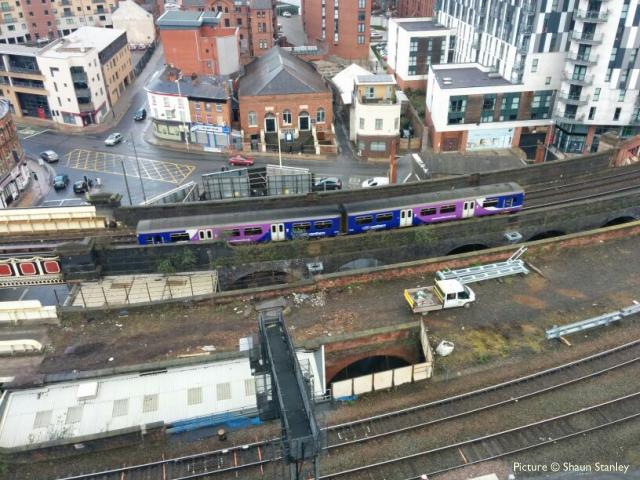
Swinging the camera to the left reveals a few more relics of an older Salford.
Past Times with Dennis Kerrison - Rhyl Shed 6K - Part 2
Captions by John Hobbs
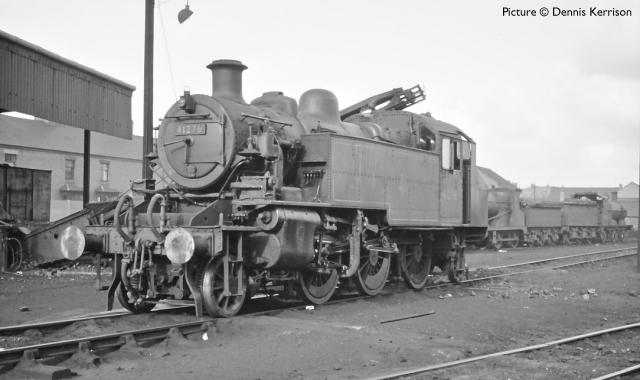
Circa 1957-58: A long-time Rhyl locomotive Ivatt Class 2 2-6-2T 41276 presents a more modern image at Rhyl Shed , where it probably replaced a Webb 'Coal Tank' 0-6-2T on turns to Denbigh, Holywell Town and Chester. By this time it would be used on the "Welsh Dragon" Push & Pull named train between Rhyl and Llandudno in the summer; ironically the only loco-hauled train through Rhyl today is a Push & Pull train; albeit with a class 67. The other regular train was the 07.55 SuX Rhyl to Sandycroft and the 10.20 Chester (General) to Rhyl which was also a P&P turn until Rhyl shed closed. There is a photograph of this engine at Afon Wen in one of Mr Rear's books so wandering was permitted!
The vacuum-operated P&P equipment can be clearly seen on the locomotive smoke box together with its separate control pipe on the buffer beam, hence there are three flexible hoses on the buffer beam; it must have been a time-consuming job for the fireman, coupling up all three. In the background an L&Y 0-6-0 and a MR 3F 0-6-0 rest.
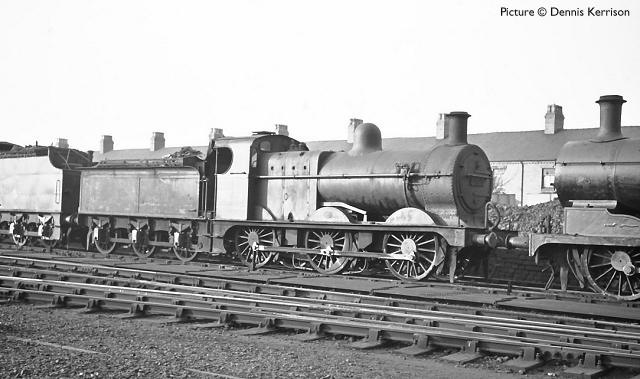
Circa 1957-58 :- Midland Railway 3F 0-6-0 43378 glints nicely in the afternoon light on Rhyl shed, it would have spent its time working to Dyserth, Foryd Harbour, Denbigh & Corwen; there was also a trip to Abergele to shunt cattle wagons for the Market there; it would be withdrawn from service in December 1959. An L&Y 0-6-0 and a 4F keep it company.
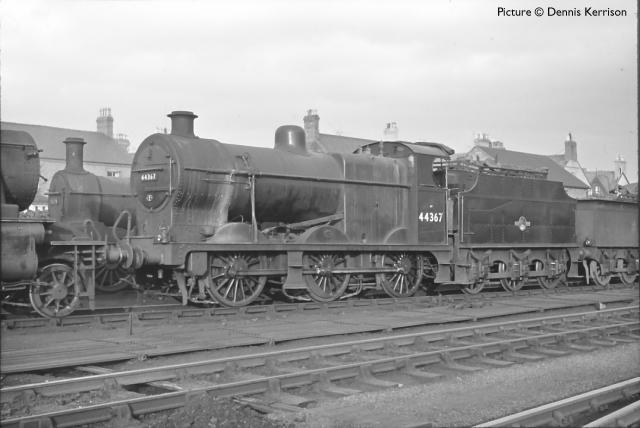
Circa 57-58 :- This was the LM&SR version of the Midland Railway's very similar 4F but the Midland one was right hand drive while the LMS one was left hand drive with different brake valves, ejectors etc. At a shed like Rhyl you would have thought that two 4Fs with a similar parentage would be allocated thus easing the spares situation; 44367 would be used on similar turns to the 3Fs but as traffic declined Rhyl managed with fewer 2F's and instead the BR Standard 78XXX class arrived which could be used on passenger turns as well. 44367 went to Workington when Rhyl closed and was withdrawn in September 1964.
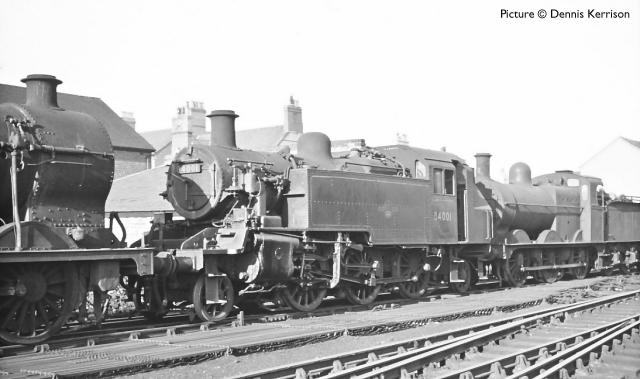
Circa 1959-60 :- BR Standard 2-6-2T 84001 rests between duties at Rhyl, these locomotives of course would work the same duties as the Ivatt version, as they too was fitted with Push & Pull apparatus; much has been said about the point of building these locomotives when the future was with diesel railcars. They had a short life, they would only outlast the ancient L&Y 0-6-0s by four years; also they did not seem to be as favoured as the Ivatt version of the 2-6-2T by the operating authorities as usually these were put in store rather than the Ivatts.
In front of it must be MR 4F 0-6-0 43981, which as can be seen by the vacuum ejector valve on the smokebox side is right hand drive, whilst the MR 3F 0-6-0 beyond it can also be seen to be right hand drive, a fine mixture of locomotives for the staff at Rhyl shed to cope with.
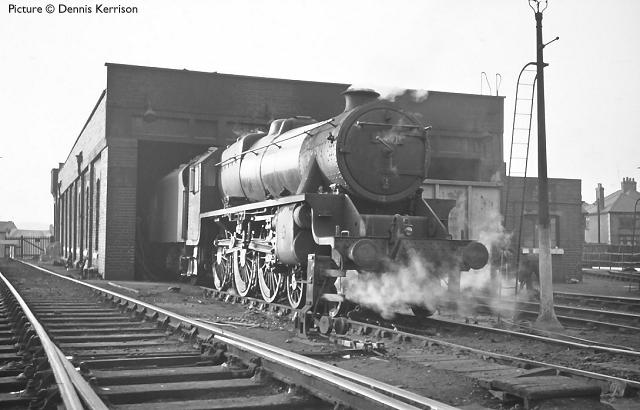
Circa 57-58 :- LMS Class 5 4-6-0 44911, a visitor to Rhyl (6K) from Chester(6A), so not far away. It catches the light nicely; to the right the end of the turntable can be seen, while to the left lies the line to Llandudno Junction and Holyhead, all this is a car park today of course.
The shed building had just had a new roof fitted, but sadly Rhyl shed would not last long as it closed in 1963.
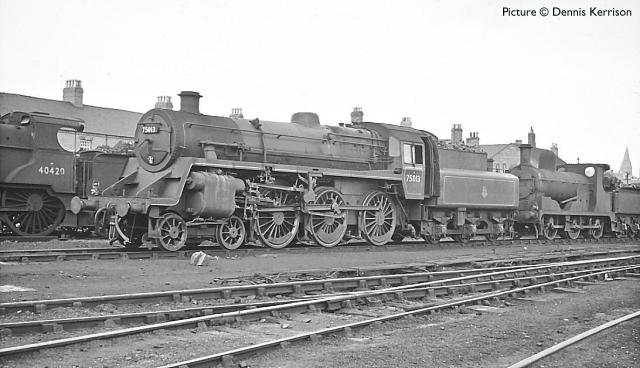
Circa 1957:- BR Standard Class 4 4-6-0 75013 is seen at Rhyl. In an earlier period Rhyl had been (7D). 75013 is seen in the company of earlier generations of traction:. 2P 4-4-0 40420 which was withdrawn at the end of 1958, while in the distance an L&Y 0-6-0 also rests.
Note: in Part 1 of this feature John mentioned seeing BR Class 4 2-6-4Ts while on holiday in southern England. So he did, but it transpires that most of them were not in fact the ones transferred from Rhyl, as they went to Scotland.
Network South East coaches in North Wales
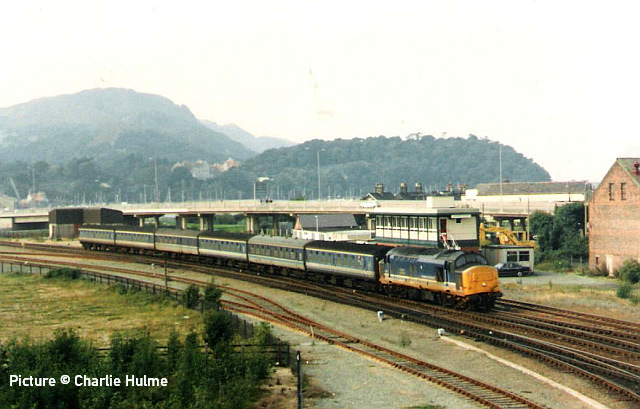
When 37-hauled passenger services began in North Wales in 1993, many of the carriages used were transferred from Network South East, having been used in locomotive-hauled trains between London Waterloo and Exeter. On arrival at Edge Hill depot they had the red line of the NSE livery over-painted with Regional Railways light blue so that they looked more like the proper RR livery. They were repainted in correct regional railways colours as time permitted: the last one to be repainted was 35518 in October 1995. The train shown above arriving at Llandudno Junction included four un-repainted ones.

The example above, photographed in Llandudno Junction sidings, is 5331. We have been contacted by Dave Fearnley, who writes:
Hoping you can provide me with
some information about Regional Railways Stock between the years of
1993 to 1996. Do you know or any of your contacts know of which mark II
coaches ran in NSE livery between the above-mentioned years, Types as
in TSO, and BSO ether A B or C and numbers if possible, as I am trying
to re create a model railway in N gauge of the above. I have been
trying to find this information for a good many weeks now;
already have a list of numbers from when they were based at Edge Hill
but can not find which were NSE liveried.
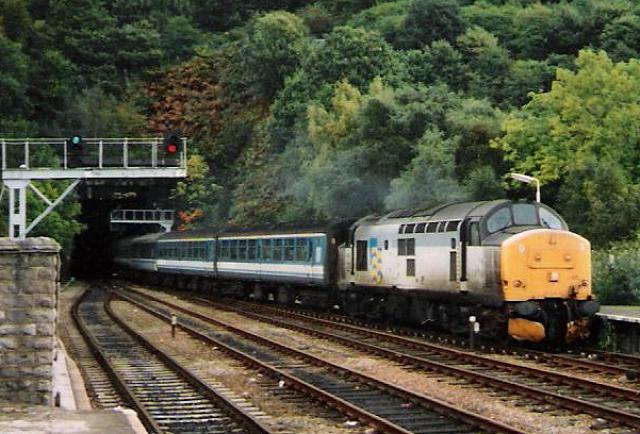
Our own feeling is that all the Mk2-style vehicles used (the fleet also included Mk 1 types) were of the Mk2a sub-type, either TSO or BSK (former BFK) varieties, and all arrived at Edge Hill in NSE livery, but this may not be true. Can anyone help? Our coach page from 2000 with a list of the carriages is still available to assist but does not quite give the information needed.
Shipping news - by Dave Sallery.
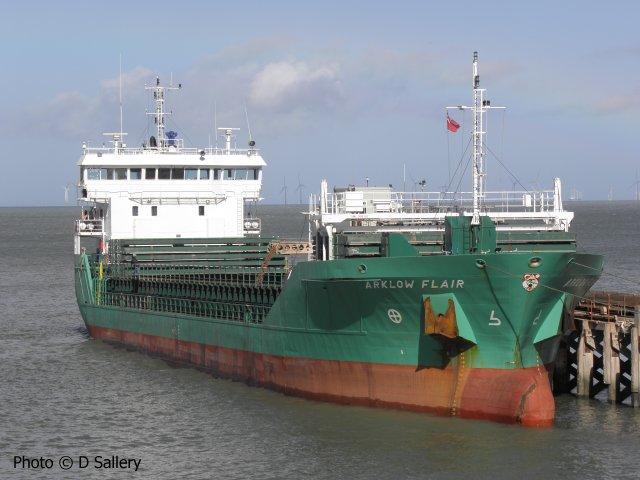
Loading limestone for Ipswich at Llanddulas on 21 March was MV Arklow Flair (built in 2007, gross tonnage 2998) showing off the emerald green colours of the Arklow fleet to good effect.
The Barbados-registered freighter Sea Breeze, which left Llanddulas on 7 March loaded with limestone for Shoreham in Sussex, ran into trouble on 9 March ten miles off the Lizard Peninsula in Cornwall, and began to sink. The crew, said to be all Russian nationals, were rescued by The Lizard and Falmouth lifeboats, and by 11 March it had been made safe enough to allow it to be towed by the towed by tug Tennaherdhya to St Austell Bay. At the time of writing it appears to be moored at Fowey.
This is the third ship serving Llanddulas in three years to suffer a mishap of some kind; in 2012 the MV Carrier had to be cut up on the beach near Llanddulas and carried away in pieces, and back in 2011 the Swanland broke up and sank, off the Lleyn Peninsula, with the loss of six lives. The resulting accident report was scathing, citing overloading and poor maintenance.
Llandudno by Night - with Peter Lloyd
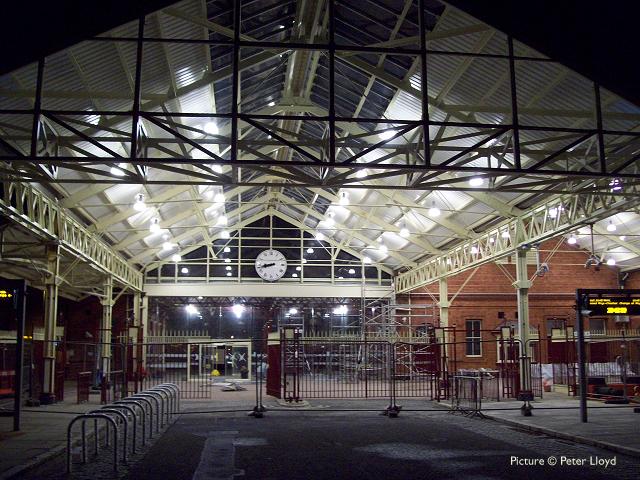
Here's a couple of views of the new-look Llandudno station at night time. It looks very well lit, and think the refurbished L.M.S. railings look great. The new concourse area should be ready for passengers in the near future, date unknown at present.
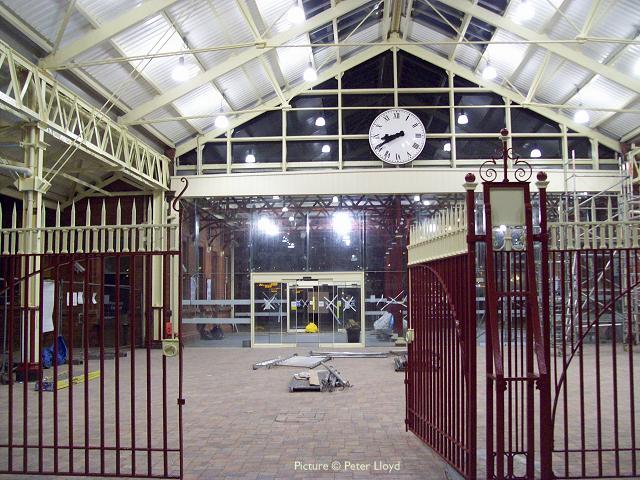
News from Berwyn - report by Peter Dickinson
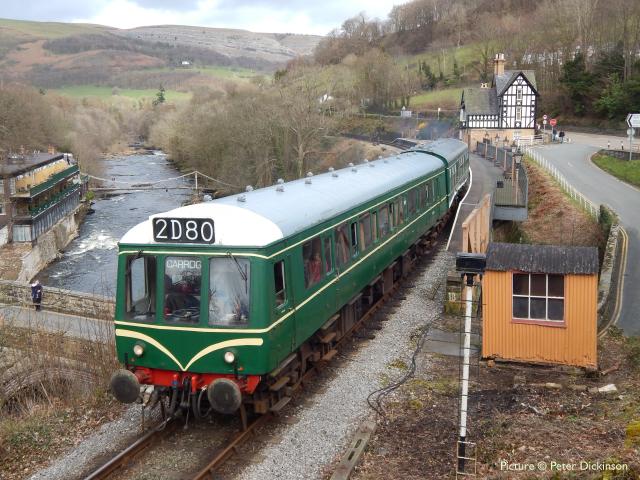
Saturday 22 March was a Diesel Day on the Llangollen Railway. Above, the hybrid Class 127 / 108 DMU departs from Berwyn. The refurbishment the chain bridge over the Dee seems to be progressing slowly. -Ed.]
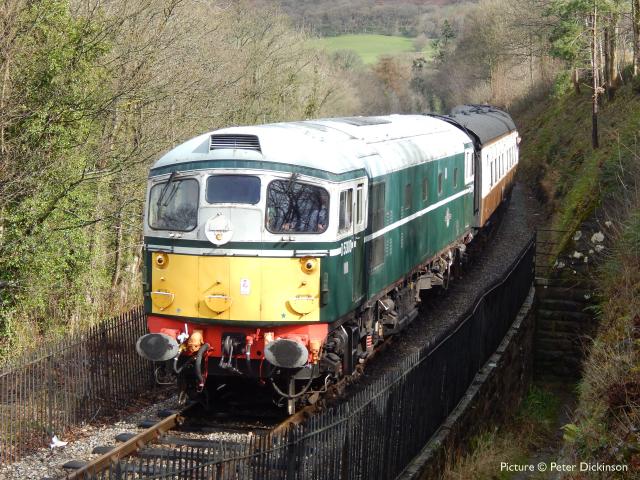
On the same day, Class 26 D5310 calls at Berwyn. Class 37 D6940 was not available: day, Class 26 D5310 is due to operate to Timetable C alongside the Class 127/108 hybrid DMU. The diesel group's Class 37 D6940 was not available for service, the following is from the owning group:
We can now unfortunately confirm
that 6940 has suffered a fractured liner plate on the A side of No 2
end bogie. These thin plates are welded in-between the horn guide and
bearing sides to provide a wear surface and are made from a manganese
alloy. They are designed to wear in preference to the neighbouring
surfaces and are prone to failure from corrosion and fatigue as they
wear and age. Detailed inspection has found in cracks of 5 of the 11
other plates on this bogie, which was replaced when the loco was first
returned to traffic back in 2003, so is not one of the original pair.
The locomotive is therefore stopped until further notice.
This is another major setback for 6940, which has now been dogged by a series of frustrating and unrelated failures over the last 5 years. Repair of the bogie will require it to be removed and fully stripped, meaning the locomotive must be lifted - a major operation. The Group are currently giving careful consideration to how we can deal with this complex, difficult and expensive problem. Although no time-scale for repair is available at present, we can confirm that 6940 is likely to be out of traffic for some time unless a replacement or loan operational bogie can be sourced for swapping with the defective one when the locomotive is lifted."
This is another major setback for 6940, which has now been dogged by a series of frustrating and unrelated failures over the last 5 years. Repair of the bogie will require it to be removed and fully stripped, meaning the locomotive must be lifted - a major operation. The Group are currently giving careful consideration to how we can deal with this complex, difficult and expensive problem. Although no time-scale for repair is available at present, we can confirm that 6940 is likely to be out of traffic for some time unless a replacement or loan operational bogie can be sourced for swapping with the defective one when the locomotive is lifted."
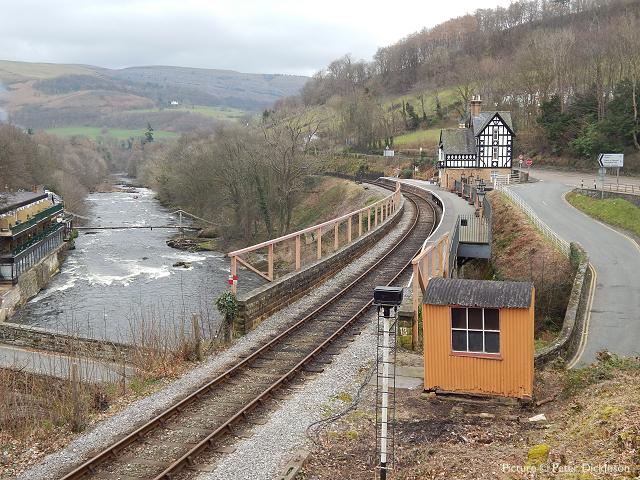
At Berwyn station over the past couple of months, work has focussed on clearing vegetation from around the station site; the biggest sign of this is the clearing of saplings from Berwyn bank eastwards from the station. This has opened up views of the River Dee and Chain Bridge again after a number of years. Another noticeable improvement has been the cosmetic restoration of the station's lamp hut at the west side of the station, which is a feature in many photographs taken from the A5 road. The boarding over the west-facing window has been taken off to reveal the window frame, with the boarding now on the inside of this. This has improved the appearance of the hut significantly.
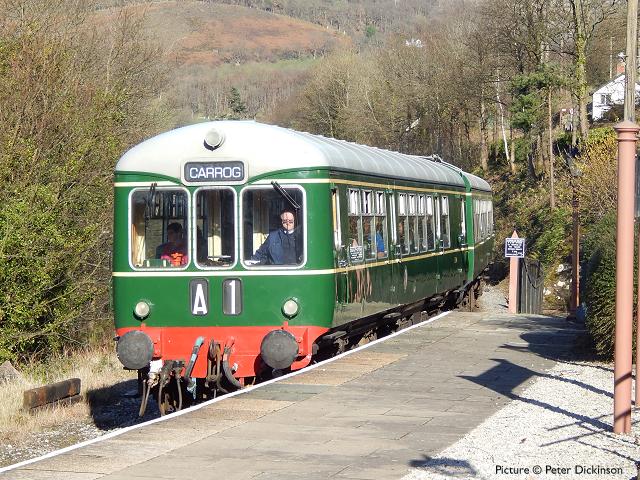
The 15:10 Llangollen to Carrog train calls on Saturday 15 March, worked by the Class 109 'Wickham' set.
Dee bridge repair - report by Roly High
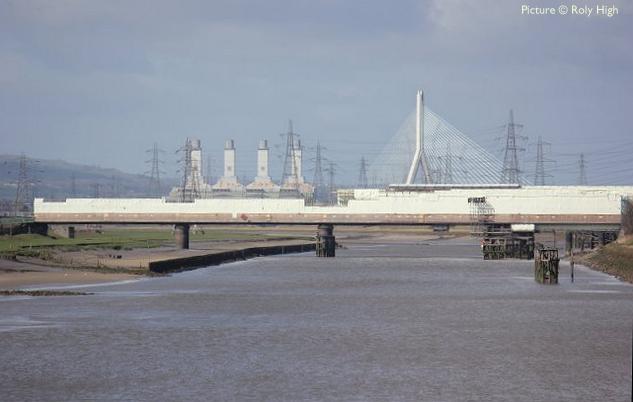
Conwy Tubular Bridge? No, Hawarden railway bridge which carries the Wrexham - Bidston 'Borderland Line' over the Dee, doing an impression. A 12-month project is under way to strengthen and repaint the bridge. In the background, the cable-stayed Flintshire Bridge, opened in 1998 and claimed to be 'the largest asymmetric cable-stayed bridge in the whole of Britain' carrying a dual-carriageway road, and the Connah's Quay gas-fired power station.
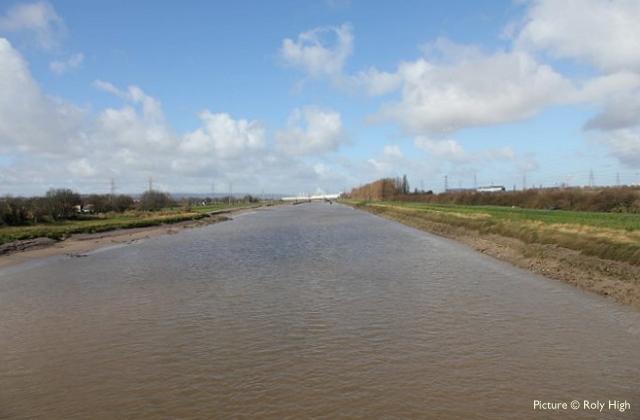
These views were taken from the old 'Blue Bridge' over the 'new cut' of the Dee in Queensferry. Long gone are the days when both these bridges used to open for river traffic. Indeed I can remember the last time they rolled open the Blue Bridge. It got stuck, and all the traffic had to be diverted through Saltney, Sandycroft and Harwarden; the Queensferry bypass hadn't been built then.
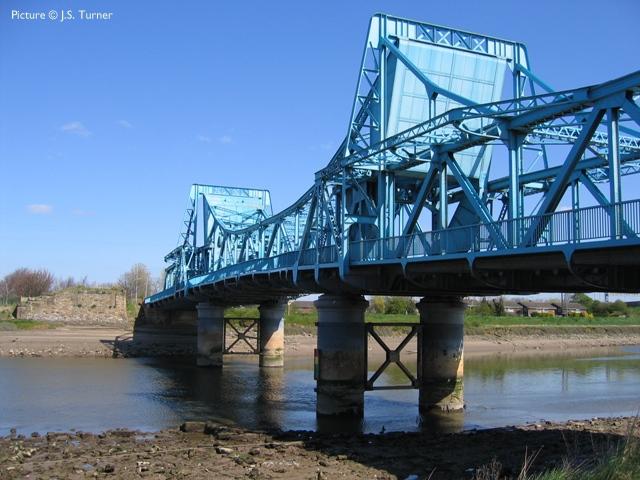
The Blue Bridge. This picture from Geograph is Copyright John S Turner and licensed for reuse under Creative Commons Licence. Ths bridge, opened in 1927, replaced an older bridge whose stone abutments can still be seen.
North Wales Coast home page | Archive | Previous Notice Board